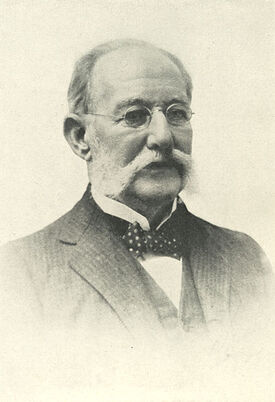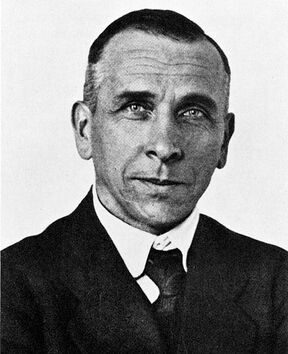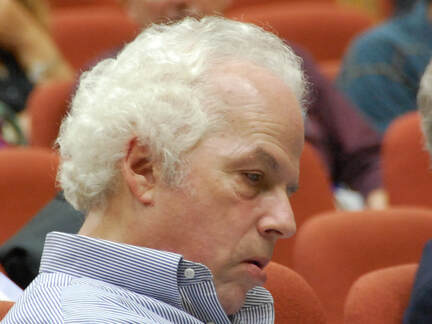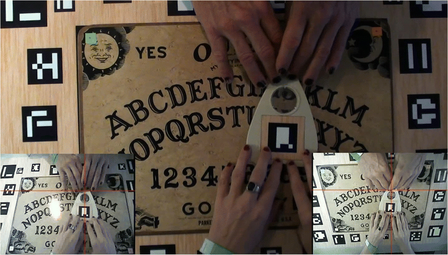 Once again, time to lighten my blog up a bit with some science jokes and puns! Many science jokes and puns are not only funny but also quite sophisticated, and require a certain amount of knowledge of the scientific field from which they originate in order to be understood. I have provided a sampler of some good ones in a previous post. However, even in science you have jokes and puns that are really bad, and the fact that some require a technical explanation that is often longer than the joke or pun itself, makes them even worse. So without further ado, here is a sampler of terrible science jokes and puns. Two chemists are in a restaurant, and they decide to show off their chemical knowledge. The first one says, “I’ll have some H2O”. The second one says, “I’ll have some H2O too”. The waiter, who is also versed in chemistry, brings them exactly what they ordered. When the chemists drink, the second one dies. H2O is of course water, but “H2O too” sounds like “H2O2” which is hydrogen peroxide. Q: What do you do with chemists who are very sick? A: If you can’t helium, and you can’t curium, you will have to barium. The elements helium, curium, and barium are used as puns for “heal them”, “cure them”, and “bury them”, respectively. Q: How do you determine the sex of a chromosome? A: Pull down its genes. Genes here is used as a pun for “jeans”. A physiology professor teaching a lecture said, “You may think mucus is gross, but it’s not”. “Snot”, get it? A mad scientist creates a replica of a full grown human being in a lab. To his horror, as soon as it gains consciousness, his creation starts talking using very vulgar language and making rude gestures. For several days the scientist tries to teach some manners to his potty-mouthed spawn, but is unsuccessful. Finally in a rage, the scientist grabs his creation and hurls it out the window of his lab. The creation falls 20 stories cursing all the way down to its death. The police arrive and arrest the scientist for making an obscene clone fall. Ugh The physics and biology professors started dating, but it didn’t work because there was no chemistry. Double Ugh. Q: You know what really makes my day? A: The Earth’s rotation. Triple Ugh. The physics professor stated, “Time flies like an arrow”. The biology professor replied, “Well, fruit flies like a banana.” OK, this one’s clever. The first “like” is as in “in the manner of”. The second “like” is as in “enjoy”. Q: Where does bad light end up? A: In prism. Prism is used as a pun for “prison”. A tectonic plate bumped into another and said, “Sorry, my fault”. The outer crust of the Earth is divided into sections called tectonic plates which move very slowly. Areas where one plate slides past another can give rise to earthquakes and create fractures in the rocks were the plates interact with each other called “faults”. I took root beer, poured it into a square glass, and I ended up with regular beer! In mathematics squaring a number (raising it to the power of two), is the opposite function of taking the square root of a number. Squaring and taking the square root cancel each other out. The implication is that the square glass cancelled the “root” in rootbeer. Dear Algebra. Please stop asking us to find your “X”. She’s never coming back, and don’t ask “Y”. Students of algebra are often asked to find the value of “X” when provided with a value for “Y”. “X” and “Y” are symbols used to signify variables in equations. Here they are used as puns for “Ex”, as in ex-wife, and the question “why”. If at first you don’t succeed, try two more times so that you failure is statistically significant. In statistics, increasing the sample size increases the chances of detecting an effect as statistically significant. The joke reflects the (false) notion that one should at least have a sample size of three to achieve statistical significance. Dr. Frankenstein registered for the body building competition, but when he got there he realized he had misunderstood the objective. Ha, ha, ha The biochemist placed a tooth from the back of the mouth into a liter of a strong acid. After a few days it dissolved forming a molar solution. In science, a mole is a widely used unit of measure corresponding to a specific number of molecules. A solution comprising a mole of molecules dissolved in a volume of one liter is called a “molar solution”. Here the joke is that a tooth from the back of the mouth is called a molar. If you are not part of the solution, you are part of the precipitate. In chemistry, those things that don’t go into solution and instead descend (precipitate) to the bottom of a flask are called the precipitate. Water Molecule: Hey lipid, want to hang out with me? Lipid: Sorry, but I don’t mix with your kind. Water Molecule: Hydrophobe! Like oil and vinegar, fats (lipids) repel water, a phenomenon called hydrophobicity from the Greek hýdrophóbos (fear of water). I wish I was adenine, because then I could pair up with U. Adenine is one of the chemical constituents of the molecule that carries the blueprint of life, DNA. When this blueprint gets executed, a molecule called RNA is made using DNA as a template. One of the chemical constituents of RNA is “uridine”, which is symbolized with a “U”. To form RNA, adenine pairs up with uridine, “U”, which is used here as a pun for the word “you”. A hug without U is toxic. If you take away the letter “u” from the word “hug”, you are left with “hg”, and Hg is the chemical symbol of mercury, a toxic element. Oxygen went on a date with potassium. It went OK. I was going to tell a joke about sodium, but Na. I heard that oxygen went out with magnesium, and I was like OMg! He made a weapon using potassium, nickel, and iron: a KNiFe! Cesium and Iodine love to sit on the sofa together and watch their favorite show: CSI. You want to hear a joke about nitric oxide? NO! These are based on the symbols in the periodic table for the elements mentioned above: oxygen (O), potassium (K), sodium (Na), magnesium (Mg), Nickle (Ni), iron, (Fe), cesium (Ce), and iodine (I). CSI is the anagram for the show “Crime Scene Investigation”. The formula of the molecule “nitric oxide” is “NO”. I told my audience a joke about noble gases, but I got no reaction. The so-called-noble gases (helium, neon, argon, krypton, xenon, and radon) are elements that do not react chemically with other elements. If a king has a bout of flatulence, does he release a noble gas? Noble as in nobility, get it? Yes, I know these jokes are terrible, but all the good ones argon! The element argon is used as a pun for “are gone”. These jokes and puns to my knowledge are not copyrighted. If you hold the copyright to any of these jokes or puns, please let me know and I will acknowledge it. Image by Perlenmuschel from Pixabay is free for commercial use and was modified from the original.
0 Comments
Some people argue that science is too conservative and set in its ways. They claim that science favors a herd mentality where scientists are rewarded for following the mainline theories and are penalized for dissent against the establishment. It is argued that this creates a hostile environment for radical new ideas that hinders scientific progress and slows down innovation. Is this true? Let’s look at 3 of these ideas that were rejected by science but turned out to be true.  Carlos Finlay Carlos Finlay Mosquitoes transmit Yellow Fever At the end of the 19th century, diseases were considered to be transmitted through person to person contact, but the mechanisms of the transmission of diseases like Yellow Fever eluded scientists. The Cuban physician, Carlos Finlay, developed a theory that Yellow Fever was transmitted by mosquitoes, and he performed studies where he had a partial success in having some volunteers bitten by mosquitoes develop mild cases of Yellow Fever. Finlay presented this idea to the scientific community in Cuba in 1881 and later in the United States. However, Finlay’s evidence turned out to be problematic, generating many unanswered questions, and his presentation was less than stellar. His idea was met with derision and he was called a crank. For nearly 20 years he persevered in his research, which he funded himself, and continued generating stronger evidence and publishing it. During this time, the Scottish physician, Patrick Manson proposed (based on his earlier work on the transmission of a disease-causing worm by mosquitoes) in 1894 that the malaria parasite could be also be spread by these insects. A few years later the British medical doctor, Ronald Ross, proved that this was indeed the case. Towards the end of the century, Finlay’s idea started looking less farfetched and gained enough notoriety to warrant it be put to test. In 1900 Walter Reed carried out his famous experiments in Cuba that demonstrated that mosquitoes transmit Yellow Fever, and Finley was vindicated.  Alfred Wegener Alfred Wegener Continents Move In 1912 the German geophysicist and meteorologist, Alfred Wegener, proposed the idea that the continents of the Earth are moving away from each other, and that they were once joined together into a great landmass he called Pangea. His evidence consisted of how the shape of the continents could be made to fit together like pieces of a puzzle, the distribution of both current and fossil species across continents, and how the geological strata in one continent matched those of others. Unfortunately, not only did Wegener lack a credible mechanism to explain this proposed continental movement, but he made several mistakes including overestimating the rates of movement. His idea of continental drift was panned by the scientific establishment and labelled a “fantasy” and “pseudoscience”, and he was publicly ridiculed. Through all this, Wegener persevered, refining his ideas and correcting his mistakes. However, it was only in the 1950s and 1960s with the advent of the new science of paleomagnetism, that numerous studies demonstrated that the seafloor indeed was spreading and that the continents were moving. Sadly, Wegener died during an expedition to Greenland in 1930 and did not live to see his idea incorporated into the modern theory of plate tectonics. Today the movement of continents can be measured with satellites.  Stanley Prusiner Stanley Prusiner An infectious Agent with no DNA or RNA There are diseases such as Creutzfeldt-Jakob disease or kuru that back in the 1970s were thought to be caused by viruses that act very slowly. The American neurologist and biochemist, Stanley Prusiner, became interested in these slow virus diseases and managed to isolate pure preparations of the infectious agent. Prusiner found that these preparations contained protein but were devoid of nucleic acids (nucleic acids such as DNA and RNA carry the genetic information in all living things including viruses), and that agents that destroyed proteins but not nucleic acids eliminated the infectivity of the preparations. Therefore Prusiner concluded, based only on this evidence, that the infectious agent was a new infectious entity made up solely of protein. He proceeded to publish an article where he not only claimed to have discovered a new infectious agent unlike any found before, but he also christened this agent, prion, a name put together from the words “proteinaceous” and “infective “ (although “proteinaceous” and “infective” should yield “proin”, “prion” sounded better). The vast majority of scientists did not accept his idea, which at the time went against everything that was known about the nature of infectious agents, and a good number of them heaped vitriol upon Prusiner. The fact that Prusiner was a stellar networker and salesman of his ideas and managed to get multimillion dollar grants did not soften their attitude. Although Prusiner kept researching and making new discoveries about prions, experiments in this field used to take years, so scientists were slow to try to reproduce his experiments. Eventually others were able to replicate his results and the concept of prions was accepted. Prusiner won the Nobel Prize in 1997. Now let's go back to our question. Does science create a hostile environment for radical new ideas that hinders scientific progress and slows down innovation? Two things have to be understood about radical new ideas in science: 1) the majority of radical new ideas turn out to be wrong, and 2) there is usually not one or two of these radical new ideas but dozens of them. Which ones are correct and which ones aren't? Should the limited funds allocated for science be made available to everyone who has a radical new idea? The answer is, of course, No. Decisions have to be made as to which ideas are more plausible than others. Science tends to give preeminence to that which is established. If you want to upend established science, the burden of proof is on you. The truth is that the radical news ideas of Finlay, Wegener, and Prusiner were not backed by convincing evidence. Their evidence generated more questions than answers, and scientists were not moved to throw orthodoxy out the window, at least right away. The insults and humiliations that Finley, Wegener, and Prusiner endured are certainly regrettable and objectionable, but this has to do more with human nature than with science. However, as more and better evidence was generated, questions were answered, errors were corrected, and experimental results were replicated, their ideas were accepted. They were right, and the establishment was wrong. But let’s be clear on something, the initial rejection of their ideas was totally warranted, even if they did turn out to be true. The photos of Carlos Finlay and Stanley Prusiner, and the photo of Alfred Wegener from the Bildarchiv Foto Marburg are all in the public domain.  Anti-vaccination groups have put out many arguments against vaccines which have been rebutted by scientific and health organizations in many publications. I don’t want to cover all these arguments because I want to address the most important and irrefutable argument against vaccines, but before I do that, I want to mention some of the most salient of the lesser arguments. Scientists and Clinicians have sold out to pharmaceutical companies which make a lot of money from unnecessary and dangerous vaccinations.
The vast majority of scientists and clinicians vaccinate their children. If these scientists and clinicians are dishonest people who sell out to pharmaceutical companies to peddle and support harmful vaccinations, why would they do that to their kids? Do you think all these people with doctorate degrees are evil, ignorant, or stupid? Also, pharmaceutical companies would make a lot more money from selling the medicines required to treat the onslaught of diseases that would roar back into our societies if we stopped vaccination than they make from vaccination itself. Vaccines cause autism and sudden infant death syndrome (SIDS). No they don’t. Well-designed studies with large numbers of children have found that vaccines are not linked to autism or SIDS. If a child is all right and develops autism after he gets his vaccines doesn’t that mean vaccines cause autism? The age at which most children are diagnosed with autism coincides with the age at which many vaccines are administered. Considering that millions of children are vaccinated, it is very likely a vaccination and an autism diagnosis will take place sufficiently close together that a parent may be tempted to infer a causal relationship between them. But there is no such relationship. Vaccines contain chemicals that cause health problems. Vaccines contain small amounts of chemicals that fulfill different functions during the production of a vaccine or in the final product. Many of these chemicals are already present in other medicines, in the food we eat, and even around our houses. At the doses used in vaccines, none of these chemicals has been found to be harmful. All the vaccines children receive can overwhelm their immune system. From the moment a child is born they are exposed to the myriad of bacteria, viruses, fungi, and other microorganisms present in the environment. The challenge to a child’s immune system posed by vaccines is a small fraction of what the immune system normally handles and no studies have found that too many vaccines can overwhelm the immune system. Vaccination is unnatural. It is better for children to get diseases and develop a natural immunity. The process by which a child’s immune system responds to a vaccine or to an infection is the same. The difference is that with vaccines the child doesn’t have to get sick, or face the risk of dying or developing complications from the disease. There are risks involved in getting vaccinated. Yes, and there are also risks involved in driving a car. Everything has a risk associated with it, and vaccines are no exception. However, the risks of getting vaccinated are extremely small compared to the risks of not being vaccinated. The safety of vaccines and adverse effects due to vaccines are continuously monitored and compiled by government agencies, and they are the object of scientific research. There are individuals who should not get vaccinated if they, for example, are prone to strong allergic reactions or have weak immune systems. So now that we have disposed of some of the lesser arguments against vaccination, let’s get down to the real argument against vaccines. This is in fact the most important argument of them all, and it permeates the whole of the anti-vaccine movement and the anti-vaccine literature, although it is seldom expressed in verbal or written form. This argument is the following: Vaccines HAVE to cause disease. Vaccines HAVE to be dangerous. Vaccines ARE unnecessary. Doctors and scientists ARE lying to us. ACCEPTING ANYTHING DIFFERENT IS UNACCEPTABLE, period, end of the discussion. In the majority of cases, this is the real argument against vaccines, and it is, of course, irrefutable. The truth is that by and large most of those vehemently opposed to vaccination are too emotionally invested in their cause to consider the evidence. The reasons for this are complex and may differ from one person to another, but they are probably related to the general reasons why human beings uncritically believe in conspiracy theories. In any case, this argument creates a challenge for scientists and health professionals. But the challenge is not to convince those that are against vaccination, which are a minority. The real challenge is vaccine hesitancy. This involves many parents who are open to vaccinating their kids but have concerns because of things they have read or heard. These are the individuals that pose the real risk to society because of the possibility that they will delay the vaccination of their children or choose only to vaccinate them against some diseases, or not to vaccinate at all. Health professionals must get to these parents before the anti-vaccination activists win their hearts and minds, and this cannot be achieved by coldly reciting the results of studies, or by pressuring or shaming them. In this modern era, not only have parents been exposed to a lot of alarmist misinformation regarding vaccines, but they also do not have the experience of earlier generations that lived at a time when many diseases such as polio ran rampant. When explaining to parents the need for vaccination, health professional must avoid judging and contradicting the parents. The parents’ concerns must be addressed sympathetically within the framework of a dialog that helps them examine their own uncertainties, and this must be done beginning at the time of a baby’s birth. Only in this way we will meet the challenge. The vaccine photograph by the US army is in the public domain.  Using the Ouija Board Using the Ouija Board Human beings have used devices such as pendulums or dowsing rods for the purposes of divination for hundreds of years. By comparison the Ouija board is a late comer to this assortment of divination devices. In the United States, the businessman, Elijah Bond, patented the first Ouija Board, and his company, Kennard Novelty Company, began selling it in 1890. The generic Ouija board is a flat board with the letters of the alphabet, the numbers from 0 to 9, and the words “yes’ and “no” inscribed upon it. Upon this board a smaller board (planchette) is placed. The players place their fingertips on the planchette and ask questions. The planchette then moves and points to letters, numbers, “yes” or “no” to answer the questions. The people using the Ouija board claim that they do not move the planchette, and interpret the movement to be a product of entities such as “spirits” or “forces”. The Ouija board became very popular in the United States. Initially it was marketed as a parlor game, but it quickly began to be associated with the spiritualist movement whose members employed the board to contact spirits. Soon everyone was using the Ouija from socialites and writers, to crime solvers and gamblers. The board even made it to episodes of popular sitcoms like I Love Lucy and Bewitched, and in its heyday outsold other iconic games like Monopoly. During this time the Ouija board was considered at most a harmless pastime until Hollywood decided to demonize it. The first movie that posited that the Ouija board could serve as a tool for demonic possession was The Exorcist, in 1973. From then on, a string of movies have employed the trope of the Ouija board as a conduit for evil, and the Ouija board has been condemned by Christian organizations.  Demonic Possession Demonic Possession Ouija boards and other divining devices such as pendulums and dowsing rods work based on a well-studied psychological effect called the “ideomotor effect”. This is a dissociative state: a situation where movement becomes dissociated from consciousness. The planchette in the Ouija board is unconsciously moved by the person(s) touching it. The effect is so realistic that many people operating the Ouija board swear that they are not moving the planchette at all, but rather that they merely allow their hands to be carried by its movements. If susceptible individuals operating the Ouija board believe that the planchette is indeed moved by spirits, and that the board is a gateway to the occult, this can have a powerful suggestive effect on the operators who, in some cases, have experienced an array of symptoms that can include trance states, convulsions, or hallucinations. Depending on the cultural background of the people involved, this can be interpreted as demonic possession. However, in none of these cases has anything supernatural been proven to occur. People convulsing and making weird noises can create quite an impression on others, but their behavior has always been found to be within the realm of the possible. Individuals operating Ouija boards do not gain access to information that they would otherwise not know or not be able to figure out by themselves. If people try to operate the Ouija board blindfolded, the movement effect persists, but the answer to questions becomes nonsensical. Episodes where dozens to hundreds of people ended up acting out directly or indirectly as a result of using divination games like the Ouija have been the result of hysteria, or what is called nowadays “conversion disorder”. This is a disorder where the emotional problems, stresses, and anxieties of individuals are expressed in the form of physical symptoms. Scientists have simply not found any evidence that Ouija boards or other divination devices work, or that they are in any way related to anything supernatural. Nevertheless, the general recommendation is that anxious individuals prone to emotional or neurological problems should not use these devices. However, I believe the real danger regarding things like Ouija boards and demonic possession lies in accepting them as real. Back in 1691 in the town of Salem in Massachusetts a group of girls started exhibiting strange behaviors including altered speech, convulsions, and trance-like states. The local physician examined the girls and concluded that they were victims of witchcraft. The town’s government accepted this diagnosis and asked the girls to name their tormentors, whom they proceeded to jail and try in court for witchcraft. Salem spiraled into madness as the girls’ accusations placed hundreds of innocent people in jail with 20 of them being led to the gallows. I recently visited Salem and went to a memorial dedicated to those executed during the Salem witch trials. The names of these people are engraved into stone slabs in the memorial. They represent an unsettling testament to what can happen when fear and hysteria leads to the uncritical acceptance of questionable beliefs. The American Horror writer H.P. Lovecraft wrote: “The oldest and strongest emotion of mankind is fear, and the oldest and strongest kind of fear is fear of the unknown.” I certainly think Lovecraft was on to something, but we have science, and science allows us to know. With science we can discover how things work, what is possible, and what is not. The best evidence we have indicates that divination devices do not work, demonic possession does not happen, and witches do not exist. Although it is often both culturally and psychologically difficult to avoid fearing these things, understanding their real nature using science can help us achieve this. But for this to happen, we have to incorporate science into the way we think, and use it to select which beliefs to hold. Ouija board use photo taken from the article by Marc Andersen, Kristoffer L. Nielbo, Uffe Schjoedt, Thies Pfeiffer, Andreas Roepstorff, and Jesper Sørensen - (2018-07-17). "Predictive minds in Ouija board sessions". Phenomenology and the Cognitive Sciences. DOI:10.1007/s11097-018-9585-8. ISSN 1572-8676. Retrieved on 2019-01-13., CC BY-SA 4.0, https://commons.wikimedia.org/w/index.php?curid=75826799 The painting The Nightmare by John Henry Fuseli is in the public domain. Photos of the Salem Witch Trial Memorial belong to the author and can only be used with permission. I recently visited the town of Salem, Massachusetts and stopped by the Old Burying Point cemetery. This cemetery, started in 1637, is the second oldest in the United States. Among the dead in this cemetery are both famous, as well as infamous denizens of early Salem days, such as those who presided over the Salem witch trials and sentenced alleged witches to death. However, one grave caught my attention because it has a large tree growing on top of it. This tree in Salem is known as “the lightning tree” due to the fact that over the years it has been struck by lightning multiple times, and one of its sides is severely damaged. The tree is remarkable not only because it is the only tree in the cemetery that has been repeatedly struck by lightning, but because of the manner in which the person interred below the tree died. The tombstone reads: HERE LYES INTERRD THE BODY OF MR CALEB PICKMAN WHO DIED JUNE 4th. 1737. (BEING STRUK WITH LIGHTNING) AGED 22 YEARS. My times are in thy hand O Remember my Life is Wind The irony that someone killed by lightning has a tree growing over his grave that has been hit itself several times by lightning has not been lost on the locals who have incorporated Caleb’s story into the town’s supernatural lore. Thus it is said that Caleb’s tree is hit by lightning every 22 years (the age he was when he died), and his soul will never rest until the tree is destroyed by lightning. Caleb is also famous because his surname is tied to an unsettling story by the late horror writer H. P. Lovecraft entitled “Mr. Pickman’s Model” in which the protagonist was said to be from “old Salem stock” and to have had a witch ancestor that was hanged in Salem in 1692. Caleb seems to be the only one in the Old Burying Point cemetery that died in this way, and, to my knowledge, Caleb’s tombstone may be the oldest surviving tombstone in the United States which states that the occupant of the grave was killed by lightning. Being killed by lightning certainly was not a very common occurrence in Salem in those days, although lighting was often viewed in the American Colonies with awe and reverence. The same was true in 18th century Europe where the fascination people experienced with lightning was often expressed with religious overtones.  Franklin's Kite Experiment Franklin's Kite Experiment Since the dawn of humanity, lightning has been associated with the Gods or considered one. Although Europeans had ample knowledge regarding the generation of static electricity, and had even developed many popular parlor tricks that employed electricity, the nature of lightning generated during thunderstorms remained mysterious. This changed in 1752 (fifteen years after Caleb’s demise) when Benjamin Franklin performed his famous kite-in-a-thunderstorm experiment. In this experiment Franklin demonstrated that lightning was electricity and could be used to charge a Leyden jar, which is a device that stores electric charge and nowadays is called a capacitor. In this way lightning became just another natural phenomena; an oversized version of the sparks seen in parlor tricks that amused crowds in Europe. A few years later, Franklin also invented the lightning rod, which quickly spread through the colonies and Europe protecting structures and the people within them from lightning. Franklin and others continued their investigations, but the emphasis of the research focused on electricity and its potential applications. Luigi Galvani discovered animal electricity in 1780. Alessandro Volta invented the battery in 1800. Michael Faraday invented the electric motor in 1821. Samuel Morse and others developed and implemented commercial telegraphy between the 1840s and 1860s, which was later replaced by wireless versions. Alexander Graham Bell invented the telephone in 1876. Thomas Edison produced the first long-lasting electric light bulb in 1879 and developed direct current (DC) setting the stage for his rivalry (War of the Currents) with George Westinghouse and Nikola Tesla who favored alternating current (AC) to electrify America. As American society became more dependent on machines and electricity, the need arose to study how they were affected by lightning. Additionally, the population of the United States increased into the hundreds of millions with a concurrent rise in lightning fatalities. By the early 1900s, an average of 4-5 lightning deaths per one million people occurred in the United States every year.  Work by Charles Thomson Rees Wilson, Basil F. J. Schonland, Heinz Wolfram Kasemir, and others in the twentieth century led to a better understanding of thunderstorms and lightning. Better weather forecasting, lightning awareness and detection, safety guidelines, and medical care contributed to reducing lighting fatalities. However, the bulk in the reduction of lighting deaths was brought about by the transition of the United States from an agrarian society to an industrial society, as this meant there were fewer people working out in the open. Today the number of lightning fatalities in the United States is less than 0.2 per million people per year. The main cause of death when lighting strikes an individual is cardiorespiratory arrest, so quick resuscitation of affected persons is often necessary for their survival. Today only about 10% of the people struck by lightning die. However, lightning often damages the nervous system. People who survive lightning strikes can suffer from problems with making and recalling memories, which compromises their capacity for learning, organization, and working. Other problems can include changes in personality, chronic pain, dizziness, severe headaches, fatigue, disruption in sleep patterns, and even seizures. The effects of lighting on the human body are the object of ongoing scientific research.
The circumstances of Caleb’s death and its relationship to lightning have been embellished by fiction and superstition, and they certainly make for a good story. But in the 279 years since he was killed by lighting an even better story has been written. This is a story where we have learned about what lightning is and isn’t, how it works, what it can do, and how to protect ourselves from it. And not only is this story still being written with new research and exciting discoveries about the nature of lighting, but this story is also true! Photographs of Caleb’s grave and tombstone belong to the author and can only be used with permission. Illustration of Franklin’s kite experiment from the book, Practical Physics, published in 1922, has no known copyright restrictions. Lightning image by Mircea Madau is in the public domain. |
Details
Categories
All
Archives
June 2024
|
 RSS Feed
RSS Feed